| Weight | 98 g |
|---|---|
| Dimensions | 50 mm |
| Focal Length (mm) | |
| Max Aperture (f) | |
| Min Aperture (f) | |
| Aperture Blades | |
| Elements | |
| Sharp (Near) | |
| Sharp (Far) | |
| Rear Mount | |
| Front Thread | |
| Flange-Focal Distance (mm @ ∞) | |
| RF/L Extension (mm) | |
| Serial Numbers | |
| Production |
Fujinon-EX 50/2.8
EBC-multicoated Plasmat enlarger lens launched in 1983 as an upgrade to Fuji’s Fujinon-EP 50mm f2.8.



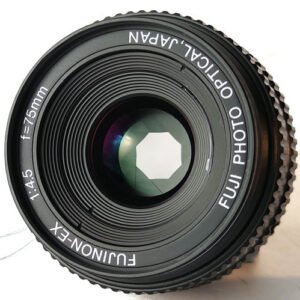






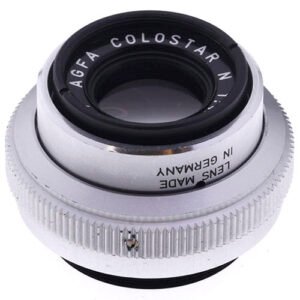

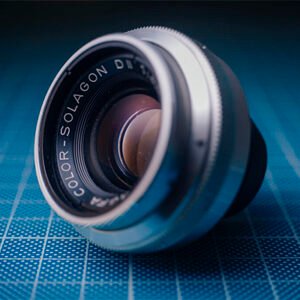
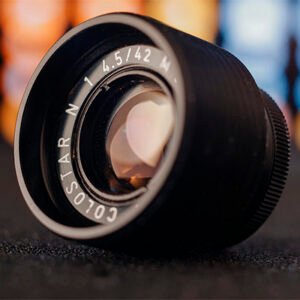
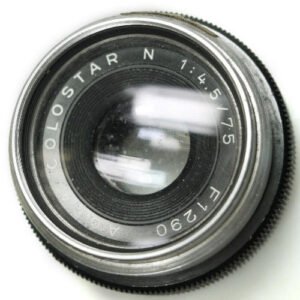



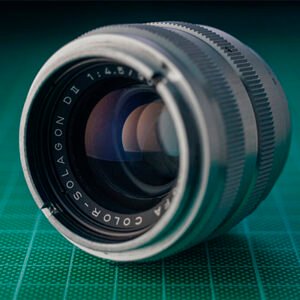


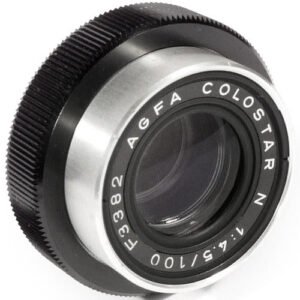

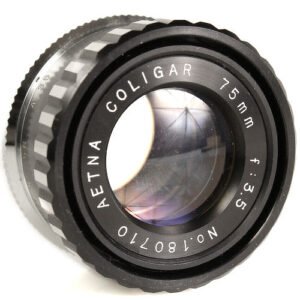
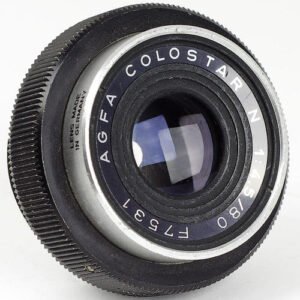
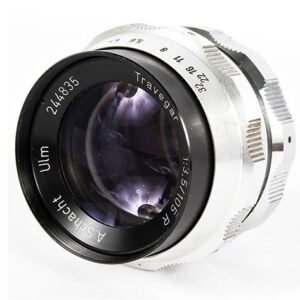

16:9 –
The 1986 Darkroom Techniques review by Bob Mitchell was the first to draw attention to these elite-level lenses, launched in America in around October 1983 to replace and significantly upgrade the Fujinon EP range. A similar Plasmat 6/4 design, the EX range benefited from Fuji’s latest EBC treatment and advances in design and manufacturing tolerances that made them better corrected and better built. Darkroom Techniques noted unprecedented centre-frame resolution across the range, not quite matched by equally excellent corners.
Lucky then, that moving the test target out to arm’s length and beyond seems to resolve the problem, and Zone 3, better than expected. Pretty much all the EX lenses are Gold-awarded performers, fully belonging alongside the Apo-branded Schneidenstocks, Meogons and even reference taking lenses like the Sigma primes. In the case of the 50mm f2.8 chromatic aberration is a hair more problematic than the Not-Quite-Apo-Rodagon N 50/2.8, but still better than all standard versions of the Schneider 50/2.8 (the rare HM excepted).
As Bob indicated, Zone 1 is a delight: Fuji’s drawing style is among the closest to modern optics in terms of very high contrast (for an enlarger lens) and, at any distance, at any aperture, any EX delivers reference-grade sharpness here – even the 105/5.6. Bokeh is consistent with 1980s taking lenses: prone to looking muddled and with faint traces of soap-bubbles on specular highlights. A comparison with the Nikon 50/2.8 is apt: both share a straight-8 diaphragm but the Nikon consistently renders slightly smoother and less distracting defocused areas. That said, bokeh fore and aft is rarely a deal-breaker: unlike many enlarger lenses you won’t find it takes over the image with freakishly unexpected properties. As a bonus, that aperture, combined with very effective flare-reducing coatings, renders some of the cleanest and prettiest sunstars in the Delta archive. This is a solid taking lens for close-ups as well as distance, but the 50m thrives in the 1-20m range better than it works as a 1:2 or higher macro lens.
The 50mm EX is a fat lens: 51mm in diameter, similar to the Minolta CE 50. The plastic-clad body and aperture ring (see also Nikon N) were derided in the day, but they have aged well. It’s how they rolled in the 80s. The lightweight aperture control is a bonus in a screw mount without a locking mechanism: too often, antique enlarger lenses with stiff, heavy controls try to unscrew themselves when stopping down. Not the Fujis. The 50mm also has a rotatable mount that finds new ways to leak light, but it’s a real bonus when seating the lens in an M42 helicoid that has no respect for your aperture window landing right side up when it hits the end of the thread. The Fuji scores points for suffering less focus shift when stopping down than, for instance, the EL-Nikkor 50mm f2.8 N. Unfortunately aperture click-stops are locked in. In terms of mechanical handling, though, this is up there with the nicest enlarging lenses to use.
Note that our rating system for Zone 3 (a full-frame corner) performance isn’t based solely on the ability to resolve line pairs. Aberrations pile up here, and it’s not uncommon for a lens to resolve detail while barely being useable because of geometric or chromatic aberration. The awarded mark is therefore somewhat subjective, but I hope more accurate as a single take-away index of how corners ‘look’ – practically, how reliable are they?
Looking at wide open performance, close-up the EX50 scores 9.1 / 8.15 (Zone 1 / Zone 3) at f2.8, dropping to 8.5 / 7.1 at distance. Here we see the widest gap between centre and corners, and near and far subjects. The gap between a standard 50mm f1.4 and the Fuji EX (or indeed any enlarger lens) is also huge: at f2.8 the Sigma Art scores 9 / 8.7 at close range (it’s very serviceable as a near-macro lens) and at distance a fine 9.4 / 9.2. The Fuji EX50 is not a lens to shoot at f2.8: a 7.1 corner is pretty ugly. But note that even at f2.8 in Zone 1 close-up the Fuji EX is a fraction sharper than the Sigma Art prime, which bodes well for stopped-down performance. Indeed the EX records table-topping marks peaking at 9.3 in Zone 1 close-up, and very nearly matches that level at distance at peak apertures (f5.6-f8).
For further comparisons, please see the Hall of Fame. Look for the top of the table…
As for those maligned corners – well, I’m not seeing a problem. You have to stop down to reach the cream – but that equally applies to the Apo-Rodagon-N. These lenses were meant for single aperture shooting two stops or more from maximum aperture. In Zone 3 the EX50 cruises to marks of 9.05 (near) and 8.8 (far) at f8 – marks which are not significantly bettered by any enlarger lens so far tested at distance. Mindful of how far outside their comfort zone they are being dragged here, we can only applaud a lens that remains in my top five favourites to work with. It receives the highest possible recommendation, especially given the price disparity between the EX50 and the no-more-desirable Apo-Rodagon-N.